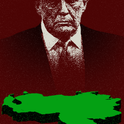As the coronavirus crisis has intensified, the turmoil in financial markets has awakened memories of 2008. At the weekend, along with announcing an interest rate cut and expansion of bond-buying, the US Federal Reserve led a group of major central banks in announcing changes to make it easier to borrow on the so-called liquidity swap lines. These are the hidden bits of wiring in the global financial system which (as I explained in my history of the financial crisis, Crashed) played a huge if under-appreciated part in pulling the world back from the brink just over a decade ago.
Swap arrangements allow the Bank of Canada, the Bank of England, the European Central Bank, the Bank of Japan and the National Bank of Switzerland to borrow unlimited quantities of dollars from the Fed in exchange for credits in their own currency. After a pre-agreed period, and after the payment of interest on both sides, the currencies are swapped back. Since it is the other central banks that need dollars, the interest payments give the Fed a small margin in its favour.
When they were first used in the 1960s, the purpose of the swap lines was to funnel scarce currencies between central banks to give them firepower in managing and maintaining the fixed exchange rates, which the big economies were all committed to uphold under the post-war Bretton Woods system.
Two generations have passed since then, but much more recently—in 2007—the Fed brought swap lines back, to serve a different purpose. Today the central banks need swaps not so much as managers of national currencies, but rather in their role as conduits: they channel the dollars they receive from the Fed to banks in the financial centres of the City of London, Zurich and Tokyo. Through the swap lines, the Fed thereby acts as a de facto lender of last resort not just to America’s banks, or to foreign banks with branches in Wall Street, but to all the major banks in countries around the world that are covered by swap arrangements, wherever those banks may be located.
Though America’s global influence may be on the wane and though the coronavirus crisis is a further demonstration of how decrepit are America’s domestic institutions, the fact that we need swap lines demonstrates that when it comes to finance, the dollar is still king. And it is America’s central bank, the Fed, that is the ultimate source of dollars.
The global banking system’s use of the dollar is remarkable. All told, non-American banks have $13 trillion in dollar-denominated assets on their books. This is roughly equal to the balance sheet of America’s own banks. To fund those holdings they swap deposits in foreign currencies into dollars. Very few of them have large deposits from retail customers in the US. But many foreign banks do borrow funds on American money markets. In good times it is a profitable trade for the foreign banks to avail themselves of cheap and convenient funding in dollars. The question is what to do in a crisis when this flow of dollars dries up?
It was acute difficulties in finding dollar funding that prompted the Fed to reintroduce the swaps in 2007. In the autumn of 2008, as the Lehman crisis escalated, they were made unlimited. Although there was less call for them after the crisis eased, in 2013 they were institutionalised between the core group of central banks, so they could be “switched on” again where needed. The fact that they have been activated in the last week is a worrying sign. It suggests that even large global banks are struggling to find the dollars they need.
Amid a panic, investors always scramble for cash, which drives up the price of borrowing, and that—in turn—threatens to destabilise balance sheets, which are often based on a revolving flow of funding and wafer-thin profit margins. In 2008, it was the Europeans who were caught short. Today, their banking systems are a shadow of their former selves, and so is their demand for dollar funding. All eyes currently are instead on Asia. The major countries there have a better grip on the coronavirus crisis, at least so far. But the economic repercussions of the shutdowns that have achieved this are only beginning to make themselves felt. There is great anxiety about the possible funding needs of Japanese investors who have large holdings of American assets. Similarly, Taiwanese insurance funds may be exposed.
But the biggest concern of all is China. We normally think of China as a large creditor to the world and to the US in particular. And this is true. But while the Chinese state has large claims on the US, Chinese businesses have also contracted large debts denominated in dollars. They might well need hundreds of billions of dollars to refinance those debts. The prospect of China actually selling some part of its holding of Treasury bonds is a spectre that has hung over financial markets since the early 2000s. But China never faced a major outflow in 2008 and in any case other investors would have been only to happy to snap up its safe US assets. Not so in our current market. US Treasury and other bond yields have been rising, so great is the pressure on fund managers to provide cash to their clients.
Another central bank would ask the Fed to activate a swap line. But the one major central bank that has no arrangement in place to swap dollars with the Fed is the People’s Bank of China. At the heart of the global financial system today, this is the basic faultline. The Fed and the PBoC have independent swap lines with other central banks. They have many nodes in common. But what are arguably the two most important central banks in the world lack a direct connection. The reasons are clearly political. Given the current complexion of the American political scene, where the Republican right is beginning to talk in terms of making China pay coronavirus “reparations,” the Fed would not want to be seen extending a dollar loan to China on the basis of Chinese collateral. Nor would Beijing be keen to admit its need for American cooperation.
In handling the pandemic, the rivalry between the US and China has been destructive enough. Let us hope that it does not prove even more damaging in dealing with the financial fallout.
Can the world count on “swaps” between central banks to prevent a coronavirus financial crisis?
Swap lines pulled us back from the brink in 2008. But as this pandemic spreads, a great power rivalry threatens to bring the global financial system tumbling down
March 18, 2020

Photo: Nicolas Economou/NurPhoto/PA Images











